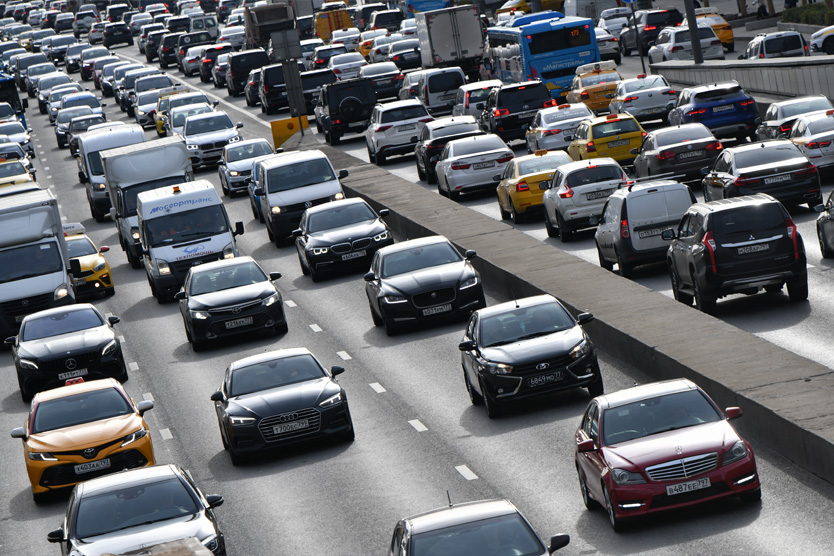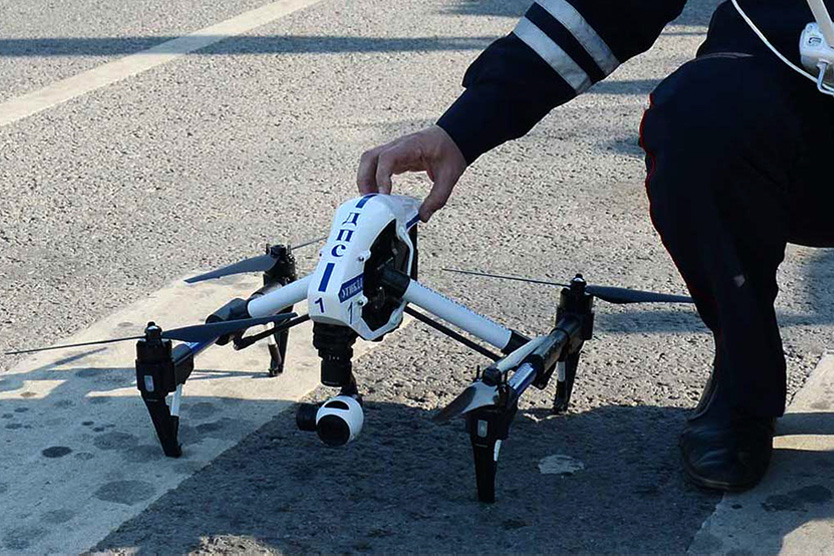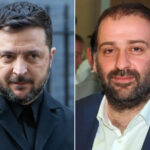Why Traffic Police Use Drones on Roads
Authorities are discussing the prospect of using drones to record traffic violations – the results of testing this system and the necessary legal framework were discussed at a roundtable in the Federation Council.
Traffic police report they have been testing unmanned aerial vehicles (drones, airships and balloons) since 2022 in 29 Russian regions, including, for example, Vologda Oblast and Krasnodar Krai. Drones ensure road traffic safety – primarily by recording unlawful driver behavior. Thus, in 2022-2023, drones recorded 35,000 violations. These were mainly driving in the oncoming lane, driving on the shoulder, and running red lights. Quadcopters with day and night vision cameras are typically used for road operations. However, fines are still issued by inspectors: the driver is stopped, shown the drone recording, and a report is filed.
The Interior Ministry states that using drones reduces accidents. For example, in Vologda Oblast by the end of 2023, the number of accidents on federal highways “patrolled” by drones decreased by 13.5% year-on-year. The number of fatalities in these accidents decreased by more than 22.5%. Traffic police note that UAVs can be used not only to identify violators but also to detect vehicles on the wanted list, monitor road conditions, and ensure safety compliance during highway repairs.
The personnel shortage will only grow. We need to find new forms of control without human involvement.
Another discussed application for drones is recording traffic accidents. Traffic police propose installing drone boxes on building roofs. These are autonomous stations with UAVs to perform tasks typically assigned to traffic police. They will process data and issue flight assignments, charge drone batteries, and also send them to minor incidents. This will increase response speed to accidents.
What legislative changes are planned
The Federation Council suggests that mass use of drones will begin after military operations in Ukraine end. Until then, officials want to develop the legal framework – they don’t rule out creating a separate working group to handle this issue. To widely use drones on roads, they need to establish procedures for regional drone procurement, regulations for data transfer to the Interior Ministry, and certification of “flying” cameras. If this isn’t done, drivers will be able to challenge decisions on liability, says a senator.

According to current legislation, cameras that can record violations and automatically issue fines must be installed on poles or specific supports. Drones don’t fall into this category. Moreover, the Administrative Offenses Code currently has no articles establishing liability for violations recorded by drones.
There are also technical problems: currently, drones are equipped with cameras with insufficiently good optics. They need to be replaced so the system can take clear photos of license plates even in bad weather. Additionally, there’s a shortage of specialists capable of operating the equipment. Law enforcement personnel have already begun training to work with drones for recording traffic violations.
How police worldwide use drones
Drones in various countries are used for territory monitoring, searching for missing persons, analyzing road situations, and controlling mass protests. For example, in the US since spring 2025, they’ve been actively expanding the Drone as First Responder (DFR) program: drones reach incident sites faster than patrols and provide real-time streaming of events, and they can be controlled from the station. The Chula Vista Police Department (California) states that average drone response time is less than 2 minutes.
There’s no public list of municipalities using the DFR system, but reports mention “dozens of US cities.” The program is promoted as a “lifesaver” for police and ordinary citizens: drones already help search for missing persons and work in emergencies like shootings. However, experts express concerns about privacy and personal data collection.
When you have a camera in the sky that can see
Federation Council
The Federation Council is the upper house of Russia’s Federal Assembly, the country’s national legislature. It was established by the 1993 constitution and represents the interests of Russia’s federal subjects, with each region sending two delegates. The council holds powers such as approving military action and federal law, and confirming presidential appointments like judges.Vologda Oblast
Vologda Oblast is a region in northwestern Russia known for its rich cultural heritage and historic architecture. It is home to the city of Vologda, founded in the 12th century, which became a significant trade and political center under Ivan the Terrible. The region is also famous for its UNESCO World Heritage sites, including the Ferapontov Monastery with its well-preserved 16th-century frescoes.Krasnodar Krai
Krasnodar Krai is a federal subject and a popular tourist region in southern Russia, often referred to as Kuban. Historically, it was a Cossack territory, with the Black Sea Cossacks being granted the land by Catherine the Great in the late 18th century. Today, it is known for its agriculture, Black Sea resorts like Sochi, and its unique Kuban Cossack culture.Interior Ministry
The Ministry of the Interior is a government department responsible for a nation’s internal affairs, typically including domestic policy, public safety, and national security. Its history is tied to the development of the modern state, often originating from institutions like the “Ministère de l’Intérieur” established in France after the Revolution to oversee administration and police. Today, its specific functions vary by country but generally focus on maintaining internal order and managing civic registration.Administrative Offenses Code
The Administrative Offenses Code is not a physical place or cultural site, but a legal document that serves as a comprehensive set of laws. It defines and regulates administrative offenses, which are minor violations of public order, and establishes the corresponding procedures and penalties. Historically, such codes are a feature of the legal systems in many post-Soviet and civil law countries, with Russia’s current code (KoAP RF) being adopted in 2001.Ukraine
Ukraine is a sovereign state in Eastern Europe with a history dating back to the medieval Kyivan Rus’ federation, which is considered a foundational predecessor for both Ukraine and Russia. It endured centuries of foreign rule before briefly gaining independence in 1918, and it ultimately secured its modern independence following the dissolution of the Soviet Union in 1991. The country is renowned for its Orthodox Christian cathedrals, Cossack heritage, and its vast, fertile agricultural lands.US
The United States is a federal republic founded in 1776 after declaring independence from Great Britain. Its history is marked by westward expansion, the Civil War, and its emergence as a global superpower in the 20th century. Culturally, it is a diverse nation known for its significant contributions to music, cinema, technology, and democratic ideals.Chula Vista Police Department
The Chula Vista Police Department is the primary law enforcement agency serving the city of Chula Vista, California. It was officially established in 1911, evolving from a town marshal system as the city grew and incorporated. The department is responsible for providing public safety services and maintaining law and order within the city limits.




